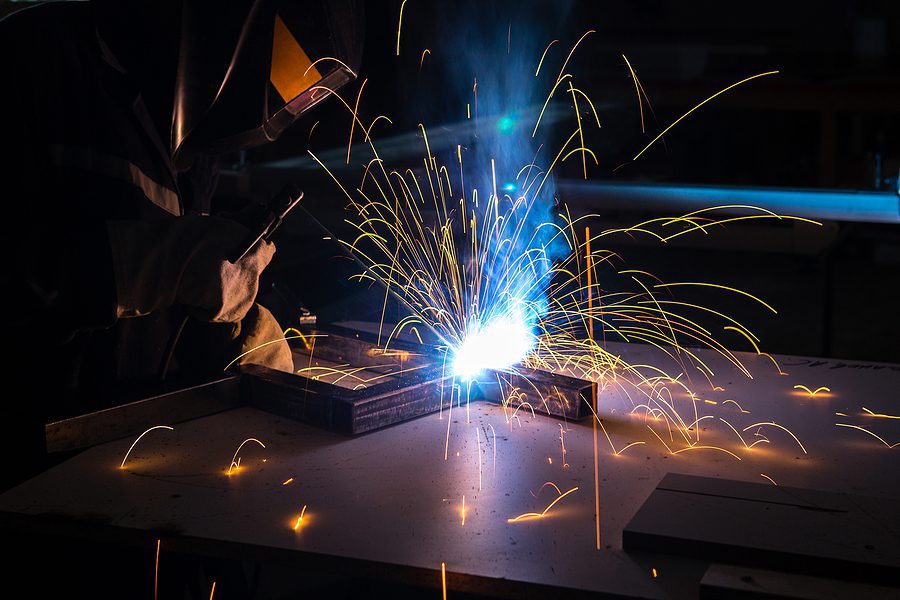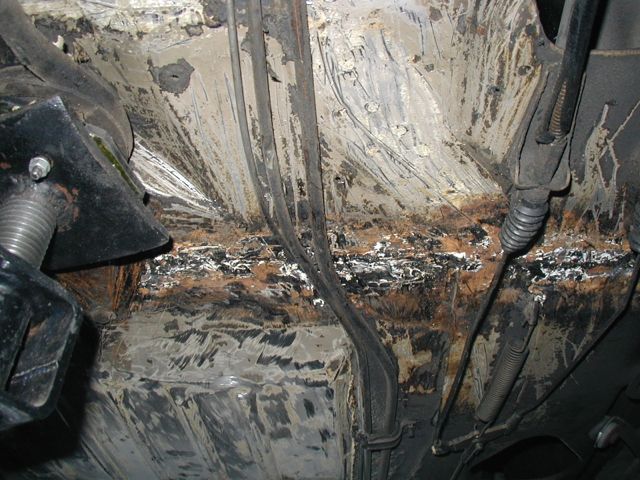Common Welding Fixing Issues and Just How to Address Them Efficiently
Welding repair services commonly experience a variety of problems that can endanger the stability of the final item. Typical issues include insufficient penetration, porosity, and misalignment, among others. Each issue presents unique obstacles that require specific approaches for resolution. Comprehending these problems is essential for welders aiming to boost their abilities and results. This conversation will certainly discover these typical welding repair work problems and reliable approaches to resolve them.
Insufficient Infiltration
Poor penetration occurs when the weld steel stops working to completely fuse with the base material, resulting in weak joints and prospective structural failures. This problem usually comes from inadequate heat input, incorrect electrode angle, or inappropriate welding speed. Welders might come across inadequate penetration due to a miscalculation of the necessary parameters for a particular material thickness or type. In addition, contamination on the base material's surface can impede effective bonding, exacerbating the problem. To address poor penetration, welders must guarantee appropriate setups on their devices and preserve a clean job surface area. Routine assessment of welds is advised to determine any deficiencies early, enabling for prompt improvements and the prevention of endangered structural integrity in welded settings up.
Porosity
Porosity is an usual defect in welded joints that materializes as small gas bubbles caught within the weld metal. This issue can jeopardize the stability of the weld, leading to reduced toughness and possible failing under stress. Montana Mobile Welding and Repair. Porosity typically occurs from contamination, wetness, or improper welding methods, which permit gases to escape into the liquified weld swimming pool. To deal with porosity, welders ought to assure correct surface area preparation, keep a clean workplace, and utilize appropriate welding specifications. Furthermore, picking the appropriate filler product and shielding gas can alleviate gas entrapment. Regular examination and screening of welds can help identify porosity early, guaranteeing prompt restorative activities are taken, consequently preserving the top quality and dependability of the bonded framework
Misalignment
Imbalance in welding can develop from various elements, including incorrect configuration and thermal growth. Understanding the source is necessary for efficient resolution. Several adjustment methods are available to realign components and guarantee architectural integrity.
Reasons of Imbalance
Welding misalignment commonly comes from a variety of underlying concerns that can endanger structural integrity. One primary reason is incorrect fit-up of elements prior to welding, which can bring about spaces and unequal surface areas. Variations in thermal expansion during the welding procedure can likewise result in distortion, especially if the products being joined have various coefficients of growth. Additionally, poor fixturing and clamping might stop working to hold components firmly in place, leading to motion throughout welding. Poorly conserved equipment, including welding machines and tools, may introduce inconsistencies in the weld grain, additional adding to misalignment. Operator error, stemming from not enough training or experience, can likewise play a considerable duty in creating misaligned welds.

Modification Techniques Offered
Attending to misalignment efficiently calls for a combination of corrective strategies tailored to the certain issues at hand. One typical approach is the usage of components or jigs to hold components in the appropriate setting throughout welding, making sure constant positioning. Furthermore, preheating the products can assist minimize distortion and enhance fit-up. For considerable misalignment, mechanical realignment methods, such as making use of hydraulic jacks or clamps, can be employed to remedy the setting before welding. Post-weld warm therapy might additionally be essential to soothe anxieties triggered by misalignment. Cautious assessment and modification during the configuration phase can stop imbalance issues from coming to be significant troubles, promoting a smoother welding procedure and enhancing overall structural honesty.
Distortion
Distortion is a common challenge in welding that can occur from numerous factors, including unequal cooling and heating. Comprehending the sources of distortion is crucial for applying effective prevention strategies. Resolving this issue not only improves architectural stability but likewise boosts the general high quality of the weld.
Reasons of Distortion
When subjected to the extreme heat of welding, materials commonly undertake modifications that can bring about distortion. This sensation largely occurs from thermal growth and tightening during the welding procedure. As the weld location heats up, the material increases; upon cooling, it gets, which can produce inner stress and anxieties. On top of that, unequal home heating throughout a workpiece can exacerbate these stress and anxieties, leading to bending or bending. The kind of material likewise plays a substantial function; steels with varying thermal conductivity and coefficients of growth might respond in different ways, causing unpredictable distortions. Poor joint design and poor fixturing can contribute to imbalance during welding, enhancing the probability of distortion. Understanding these causes is vital for efficient welding repair service and avoidance methods.
Avoidance Techniques
Efficient avoidance methods for distortion throughout welding focus on controlling heat input and ensuring browse around this site appropriate joint style. Preserving a constant heat input aids to lessen thermal expansion and tightening, which can bring about distortion. Utilizing strategies such as preheating the workpiece can likewise decrease the temperature level gradient, promoting consistent heating. Furthermore, picking ideal joint layouts, such as T-joints or lap joints, can boost stability and lower stress and anxiety concentrations. Executing correct fixturing to secure the work surfaces in place additionally aids in keeping positioning during the welding procedure. Staggered welding series can distribute warmth a lot more evenly, preventing local distortion. By applying these approaches, welders can greatly reduce the possibility of distortion and boost the overall high quality of their welds.
Fracturing
Cracking is a typical problem experienced in welding repair services, usually resulting from different factors such as inappropriate cooling rates, product selection, or insufficient joint preparation. The event of splits can substantially compromise the stability of the weld, resulting in potential failings during procedure. To resolve this issue, welders should initially analyze the root causes, guaranteeing that products are compatible and suitably chosen for the specific application. Additionally, managing the cooling rate throughout the welding process is important; quick air conditioning can generate anxiety and result in fracturing. Proper joint style and prep work likewise add to minimizing the risk. Carrying out these approaches can enhance weld top quality and longevity, inevitably lowering the chance of fracturing in ended up weldments.

Incomplete Fusion
A significant problem in welding repairs is insufficient combination, which takes place when the weld steel does not appropriately bond with the base material or previous weld passes - Belgrade Fabrication. This problem can result in weak points in the joint, possibly compromising the stability of the bonded structure. Aspects contributing to insufficient combination consist of inadequate warmth input, incorrect welding strategy, and contamination of the surfaces being joined. To address this problem effectively, welders ought to ensure correct pre-weld cleansing and surface area prep work, along with change their welding see this site specifications to achieve appropriate infiltration and fusion. Normal examination during the welding process can additionally assist determine insufficient blend early, allowing for prompt rehabilitative steps to improve the total top quality of the weld
Overheating
While welding repair work can improve architectural stability, overheating offers a considerable challenge that can bring about material degradation. Extreme warm during welding can change the mechanical properties of metals, causing lowered stamina, boosted brittleness, try these out and bending. This sensation is particularly essential in high-stress applications where structural dependability is paramount. Identifying getting too hot can involve visual assessments for staining or distortion, in addition to monitoring temperature level during the welding procedure. To minimize the threats associated with getting too hot, welders should use ideal techniques, such as controlling heat input, readjusting travel speed, and utilizing suitable filler products. Additionally, carrying out pre- and post-weld heat therapies can help recover material buildings and improve the total top quality of the repair work, guaranteeing long-lasting performance and safety and security.
Frequently Asked Concerns
What Are the Common Indications of a Welding Flaw?

How Can I Examine My Welds for High quality?
To test welds for top quality, one can use visual inspections, ultrasonic screening, and radiographic approaches. Each strategy assures architectural integrity, determines flaws, and validates adherence to defined requirements, inevitably improving the reliability of the welded joints.
What Safety and security Preventative Measures Should I Take While Welding?
When welding, one need to prioritize safety and security by using proper personal safety tools, making certain appropriate ventilation, protecting flammable products away, preserving a clean work space, and understanding surroundings to avoid accidents and injuries.
Can I Fix a Weld Without Remodeling the Entire Joint?
Fixing a weld without redesigning the entire joint is feasible, relying on the damages (Welding). Strategies such as grinding, including filler product, or utilizing a welding process can properly address details flaws while preserving the surrounding framework
What Devices Are Necessary for Efficient Welding Repairs?
Essential devices for efficient welding repairs include a welding device, cord brush, mill, protective gear, clamps, and filler materials. Each tool plays a vital role in guaranteeing high quality and safety and security during the repair service procedure. Porosity typically occurs from contamination, dampness, or incorrect welding methods, which permit gases to leave into the liquified weld swimming pool. Badly kept equipment, consisting of welding equipments and tools, might present disparities in the weld grain, more adding to imbalance. When subjected to the intense heat of welding, materials often go through adjustments that can lead to distortion. Cracking is a common problem run into in welding repairs, typically resulting from numerous aspects such as improper air conditioning rates, product selection, or inadequate joint preparation. A substantial issue in welding repairs is insufficient combination, which takes place when the weld steel does not properly bond with the base material or previous weld passes.